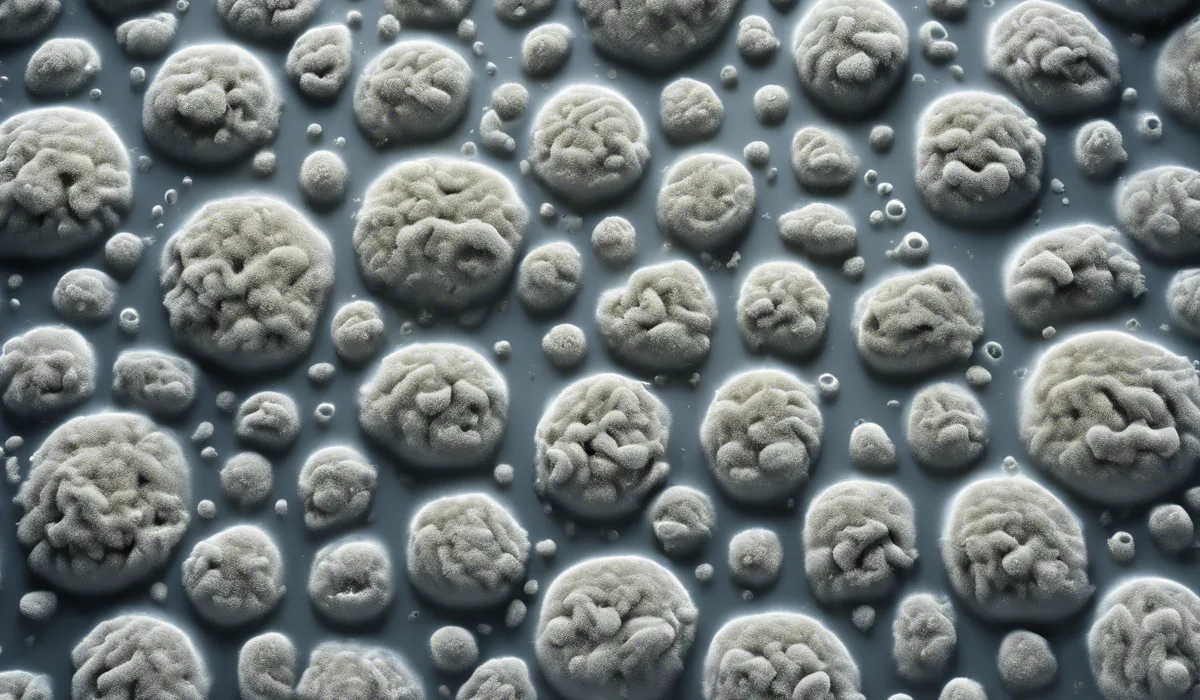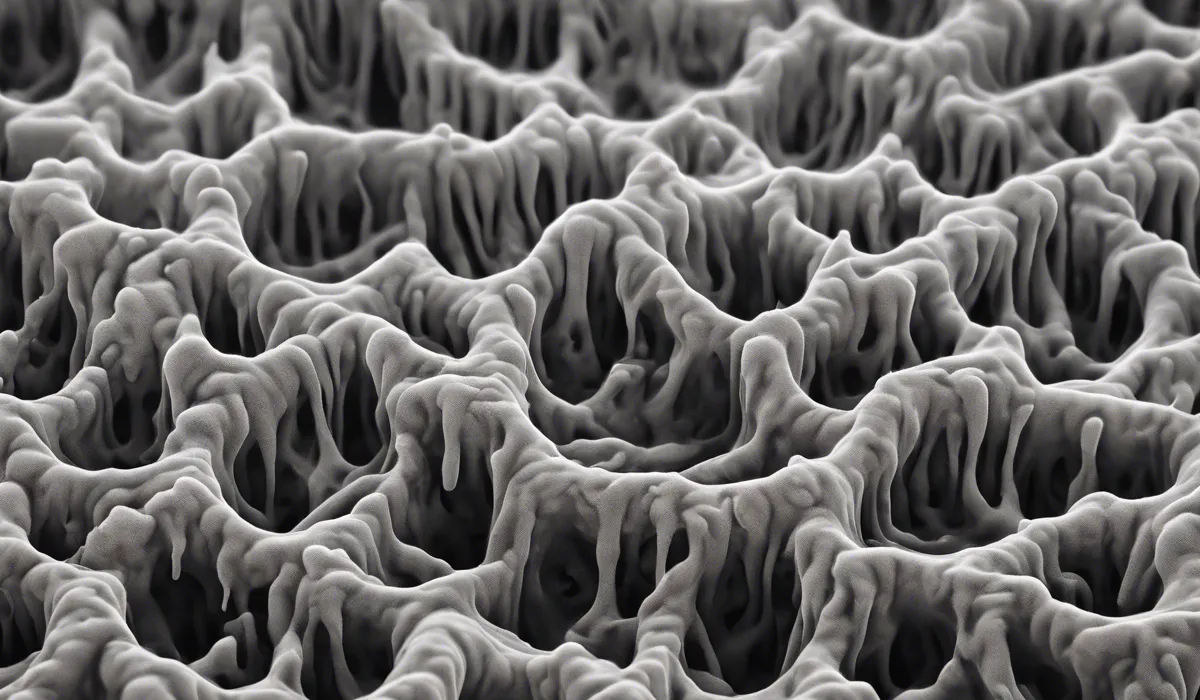Mold does not typically kill bacteria; instead, it competes with bacteria for nutrients and space. Some molds produce substances that can inhibit bacterial growth, but this does not necessarily lead to bacterial death. The interaction between mold and bacteria depends on the specific species and environmental conditions.
Science Behind Mold-Bacteria Interactions

Overview of Mold and Bacteria as Microorganisms
Mold and bacteria are both types of microorganisms that play crucial roles in our environment.
Mold is a type of fungus that grows in multicellular filaments called hyphae, while bacteria are single-celled organisms.
Both can be found in a variety of environments, from soil and water to plants and animals.
Competition Among Microorganisms for Resources
In the microscopic world, mold and bacteria often fight for the same resources. They need food and space to grow, and when they share an environment, they must compete.
Sometimes, one will outcompete the other by using the resources more efficiently.
Mechanisms of Mold Defense Against Bacteria
Mold has developed several strategies to defend itself against bacteria. These include producing antibiotics, acids, and mycotoxins that can inhibit or even destroy bacterial cells.
Antibiotic Production
Some molds produce antibiotics, which are chemicals that kill or stop the growth of bacteria.
For example, the mold Penicillium is known for producing penicillin, the first antibiotic discovered.
Acid Production
Molds can also produce acids that make the environment inhospitable for bacterial growth.
These acids lower the pH, which can inhibit bacterial enzymes and ultimately their survival.
Mycotoxins
Mycotoxins are toxic compounds produced by certain types of molds. These toxins can be harmful to both bacteria and humans and are a significant concern in food safety.
Where Mold May Inhibit or Kill Bacteria?
There are specific scenarios where mold’s defense mechanisms are particularly effective against bacteria.
For instance, in a nutrient-limited environment, molds that produce antibiotics can suppress bacterial colonies to ensure their survival.
Factors Influencing Mold’s Ability to Kill Bacteria

Environmental Conditions
The ability of mold to impact bacteria is strongly influenced by environmental factors such as moisture, temperature, and pH.
Molds thrive in damp, warm conditions, and these same conditions can also affect the effectiveness of mold-produced antibiotics and acids.
Types of Mold and Their Specific Antibacterial Properties
Not all molds have the same ability to inhibit or kill bacteria. Some, like the aforementioned Penicillium, are quite effective due to their potent antibiotic production.
Types of Bacteria and Their Susceptibility to Mold
Just as not all molds are equal in their antibacterial properties, not all bacteria are equally susceptible.
Some bacteria have developed resistance to certain mold-produced antibiotics, which is a growing concern in medicine.
Presence of Other Microorganisms and Biofilms
The presence of other microorganisms can also affect the interaction between mold and bacteria.
For example, bacteria that live in biofilms, a slimy protective layer, are often more resistant to molds’ defense mechanisms.
Implications and Applications

Use of Mold in Antibiotic Production
The discovery of Penicillium’s antibiotic properties revolutionized medicine. Today, molds are still used to produce life-saving drugs, although the rise of antibiotic-resistant bacteria has made this a challenging task.
Risks of Mold Growth in Homes and Food Industry
Mold growth in homes and the food industry presents significant health risks.
Molds can produce allergens and mycotoxins, which can cause illness and food spoilage, respectively, making it important to control moisture and temperature to prevent mold growth.
Mold’s Role in Ecosystem Balance and Decomposition
Mold plays a critical role in ecosystems as a decomposer, breaking down dead organic matter and recycling nutrients back into the soil. This process is essential for maintaining the balance of ecosystems.
Future Research Directions in Mold-Bacteria
Research into mold-bacteria interactions continues to be a vibrant field.
Scientists are exploring how to harness these interactions for new biotechnologies, such as producing new antibiotics or using molds to clean up environmental pollutants.
FAQs About Does Mold Kill Bacteria
Does mold have the ability to kill bacteria?
Mold does not typically kill bacteria; it usually competes with them for resources.
Can mold inhibit the growth of bacteria?
Some molds can produce substances that inhibit the growth of certain bacteria, but this doesn’t always result in bacterial death.
Is the interaction between mold and bacteria always the same?
No, the interaction between mold and bacteria can vary depending on the species and environmental conditions.
Do all molds produce substances that affect bacteria?
Not all molds produce substances that can affect bacteria; it is dependent on the mold species.
What determines the outcome of the competition between mold and bacteria?
The outcome is determined by factors such as the specific species involved and the availability of nutrients and space.
Final Thoughts
Mold typically competes rather than kills bacteria, vying for the same resources. While some molds secrete substances that can suppress bacterial growth, it’s not a given that these substances will kill bacteria.
The exact outcome of mold-bacteria interactions is highly dependent on the species involved and the environmental context.
Useful Resources
- https://www.nlm.nih.gov/exhibition/fromdnatobeer/exhibition-interactive/illustrations/penicillin-alternative.html
- https://www.epa.gov/mold/does-ultraviolet-uv-radiation-uv-lamps-kill-mold
- http://www.fsis.usda.gov/food-safety/safe-food-handling-and-preparation/food-safety-basics/molds-food-are-they-dangerous
